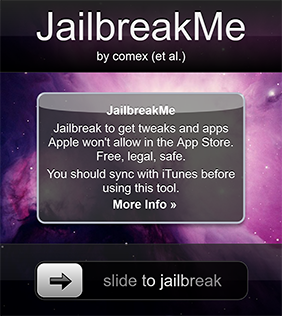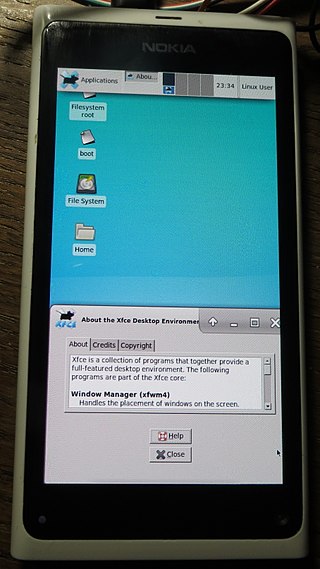
Privilege escalation is the act of exploiting a bug, a design flaw, or a configuration oversight in an operating system or software application to gain elevated access to resources that are normally protected from an application or user. The result is that an application with more privileges than intended by the application developer or system administrator can perform unauthorized actions.
Address space layout randomization (ASLR) is a computer security technique involved in preventing exploitation of memory corruption vulnerabilities. In order to prevent an attacker from reliably jumping to, for example, a particular exploited function in memory, ASLR randomly arranges the address space positions of key data areas of a process, including the base of the executable and the positions of the stack, heap and libraries.
launchd is an init and operating system service management daemon created by Apple Inc. as part of macOS to replace its BSD-style init and SystemStarter. There have been efforts to port launchd to FreeBSD and derived systems.

A Hackintosh is a computer that runs Apple's Macintosh operating system macOS on computer hardware not authorized for the purpose by Apple. This can also include running Macintosh software on hardware it is not originally authorized for. "Hackintoshing" began as a result of Apple's 2005 transition to Intel processors, away from PowerPC. Since 2005, Mac computers use the same x86-64 computer architecture as many other desktop PCs, laptops, and servers, meaning that in principle, the code making up macOS systems and software can be run on alternative platforms with minimal compatibility issues. Benefits cited for "Hackintoshing" can include cost, ease of repair and piecemeal upgrade, and freedom to use customized choices of components that are not available in the branded Apple products. macOS can also be run on several non-Apple virtualization platforms, although such systems are not usually described as Hackintoshes. Hackintosh laptops are sometimes referred to as "Hackbooks".

iOS is a mobile operating system developed by Apple Inc. exclusively for its hardware. It is the operating system that powers many of the company's mobile devices, including the iPhone; the term also includes the system software for iPads predating iPadOS—which was introduced in 2019—as well as on the iPod Touch devices—which were discontinued in mid-2022. It is the world's second-most widely installed mobile operating system, after Android. It is the basis for three other operating systems made by Apple: iPadOS, tvOS, and watchOS. It is proprietary software, although some parts of it are open source under the Apple Public Source License and other licenses.
SpringBoard is the standard application that manages the iPhone's home screen. Other tasks include starting WindowServer, launching and bootstrapping applications and setting some of the device's settings on startup.
On Apple devices running iOS and iOS-based operating systems, jailbreaking is the use of a privilege escalation exploit to remove software restrictions imposed by the manufacturer. Typically it is done through a series of kernel patches. A jailbroken device permits root access within the operating system and provides the right to install software unavailable through the App Store. Different devices and versions are exploited with a variety of tools. Apple views jailbreaking as a violation of the end-user license agreement and strongly cautions device owners not to try to achieve root access through the exploitation of vulnerabilities.

Cydia is a graphical user interface of APT for iOS. It enables a user to find and install software not authorized by Apple on jailbroken iPhones, iPads and iPod Touch devices. It also refers to digital distribution platform for software on iOS accessed through Cydia software. Most of the software packages available through Cydia are free of charge, although some require purchasing.
blackra1n is a program that jailbreaks versions 3.1, 3.1.1 and 3.1.2 of Apple's operating system for the iPhone and the iPod Touch, known as iOS.

Jay Ryan Freeman is an American businessman and software engineer. He is known for creating the Cydia software application and related software for jailbroken iOS—a modified version of Apple's iOS that allows for the installation and customization of software outside of the regulation imposed by the App Store system.
A SHSH blob is an unofficial term referring to the digital signatures that Apple generates and uses to personalize IPSW firmware files for each iOS device. They are part of Apple's protocol designed to ensure that trusted software is installed on the device, generally only allowing the newest iOS version to be installable. Apple's public name for this process is System Software Authorization.

JailbreakMe is a series of jailbreaks for Apple's iOS mobile operating system that took advantage of flaws in the Safari browser on the device, providing an immediate one-step jailbreak, unlike more common jailbreaks, such as Blackra1n and redsn0w, that require plugging the device into a computer and running the jailbreaking software from the desktop. JailbreakMe included Cydia, a package management interface that serves as an alternative to the App Store. Although it does not support modern devices, it can still be used and the site is up.
greenpois0n is a name shared by a series of iOS jailbreaking tools developed by Chronic Dev Team that use exploits to remove software restrictions on iPhones, iPads, iPod Touches, and Apple TVs. Greenpois0n's initial release in October 2010 jailbroke iOS 4.1, and its second version in February 2011 jailbroke iOS 4.2.1 as well as iOS 4.2.6 on CDMA iPhones. The second generation of the tool, greenpois0n Absinthe, was developed with iPhone Dev Team members and jailbroke iOS 5.0.1 in January 2012, and a second version jailbroke iOS 5.1.1 in May 2012.

The hacking of consumer electronics is an increasingly common practice which users perform in order to customize and modify their devices beyond what is typically possible. This activity has a long history, dating from the days of early computer, programming, and electronics hobbyists.

iMessage is an instant messaging service developed by Apple Inc. and launched in 2011. iMessage functions exclusively on Apple platforms: macOS, iOS, iPadOS, and watchOS.
The Pangu Team, is a Chinese programming team in the iOS community that developed the Pangu jailbreaking tools. These are tools that assist users in bypassing device restrictions and enabling root access to the iOS operating system. This permits the user to install applications and customizations typically unavailable through the official iOS App Store.

The Apple T2 security chip is a system on a chip "SoC" tasked with providing security and controller features to Apple's Intel based Macintosh computers. It is a 64-bit ARMv8 chip and runs bridgeOS. T2 has its own RAM and is essentially a computer of its own, running in parallel to and responding to requests by the main computer that the user interacts with.

Meltdown is one of the two original transient execution CPU vulnerabilities. Meltdown affects Intel x86 microprocessors, IBM POWER processors, and some ARM-based microprocessors. It allows a rogue process to read all memory, even when it is not authorized to do so.
The Linux kernel can run on a variety of devices made by Apple, including devices where the unlocking of the bootloader is not possible with an official procedure, such as iPhones and iPads.

iPhone and iPod Touch models released between 2007 and 2009 used system on a chip (SoC) circuits designed by Samsung and manufactured to Apple's specifications. Two such SoCs were used: the Samsung S5L8900, used in the first-generation iPhone, the iPhone 3G, and the first-generation iPod Touch, and the Samsung S5L8920, used in the iPhone 3GS and the third-generation iPod Touch. Both chips belong to Samsung's S5L family of SoCs.











